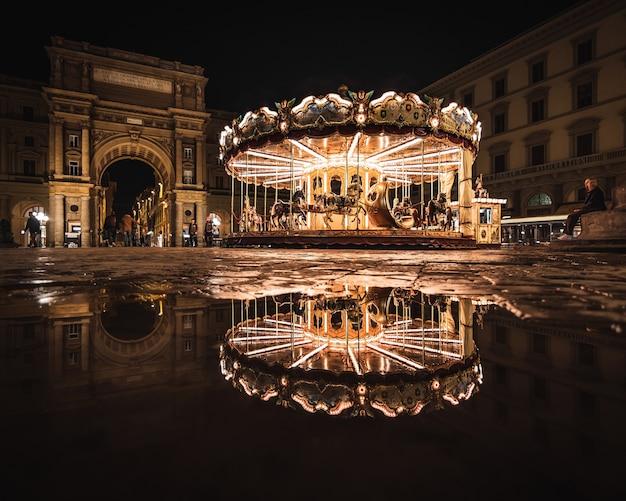Have you ever wondered whether the color of your paint will change with a second coat? If so, you’re not alone. Many people are unsure about whether applying multiple coats of paint will make it darker or lighter. In this blog post, we’re going to delve into this common question and provide some insight into how paint behaves with each successive coat.
From addressing roller marks to achieving a seamless touch-up, we’ll also tackle related topics such as the need for multiple coats, the drying time for paint to reach its true color, and whether darker shades require more coats. Whether you’re a novice DIY enthusiast or a seasoned painter, understanding how paint behaves can help you achieve the desired results and make your projects shine.
So, if you’re ready to get to the bottom of this painting mystery, let’s dive in and explore whether paint gets darker with a second coat and all the factors that can impact the final appearance of your painted surfaces.
Does Paint Get Darker With a Second Coat
When it comes to freshening up your walls with a fresh coat of paint, you may be wondering whether a second coat will make the color appear darker. It’s a common question that many DIY enthusiasts ponder, and today we’re here to shed some light on the subject. So, grab your paintbrush and let’s dive right in!
The Mystery of the Second Coat
Why does the paint color appear differently after applying a second coat? Well, it’s all about the science of light and how it interacts with the paint. When you apply a fresh coat of paint, you introduce a new layer that absorbs and reflects light in its own unique way. While the overall color will remain the same, the perception of darkness or lightness can indeed change.
The Magic of Pigments
Let’s talk pigments, shall we? Paint is composed of pigments that give it color. These pigments are suspended in a liquid binder, which is what holds them together and allows them to adhere to the surface. But here’s the thing: the more pigment there is in the paint, the more light it absorbs. And when light is absorbed, the color appears darker.
The Truth About Transparency
Transparency plays a role too! Some pigments are more transparent than others, and this can affect how the paint appears after multiple coats. If the pigments are transparent, the underlying layers of paint will show through, making the color look lighter. On the other hand, if the pigments are more opaque, the paint will have better coverage and appear darker with each additional coat.
Time to Prime
Priming makes a difference. Before applying your second coat, consider whether you’ve used a primer. Primers create a neutral base for your paint, allowing the color to shine without interference from the previous wall color. When you skip the primer, the old color may mix with the new paint, altering the final result. So, unless you want a surprise color party on your walls, don’t underestimate the power of priming!
Patience is a Virtue
Now, let’s talk patience. Rome wasn’t built in a day, and neither is a perfectly painted room. If you’re not satisfied with the color intensity after the first coat, fear not! Give it some time to dry completely before slapping on that second coat. As the paint dries, it undergoes a transformation, and the color may deepen slightly, giving you a truer representation of the final hue. So, resist the temptation to rush and let the paint work its magic.
Consistency is Key
Remember, consistency is key! When applying a second coat, it’s crucial to maintain a consistent application technique. Whether you’re rolling, brushing, or spraying, keep it consistent to ensure an even distribution of color. Inconsistencies in application can lead to variations in color intensity, which may make your walls look like a Picasso creation. And unless you’re going for that avant-garde aesthetic, it’s better to stick with a uniform color.
Embrace the Dark Side (or Light Side)
In conclusion, does paint get darker with a second coat? Well, it depends! The color perception can indeed change with each additional coat due to the way light interacts with the pigments and the transparency of the paint. Factors like using a primer, allowing proper drying time, and maintaining consistency in application can all impact the final result. So, embrace the painting process, have fun experimenting, and remember that a fresh coat of paint can transform more than just your walls—it can transform the entire ambiance of your space! Happy painting!
FAQ: Does Paint Get Darker With a Second Coat
So, you’ve got your paintbrushes ready, and you’re eager to transform your home with a fresh coat of paint. But before you dive into your DIY project, you might have a few burning questions about whether paint gets darker with a second coat. Don’t worry, we’ve got you covered with this comprehensive FAQ section. Let’s clear up the confusion and get those walls looking fabulous!
Does a Second Coat of Paint Dry Darker
You might be surprised to learn that a second coat of paint doesn’t typically dry darker. In fact, the color you see when the paint is wet is generally the color you’ll get when it’s dry. However, keep in mind that different factors, such as lighting, can affect how the color appears.
Does Three Coats of Paint Make It Darker
While it’s true that adding more coats of paint can intensify the color, three coats are usually unnecessary. Two coats are usually sufficient for achieving a solid and uniform finish. Unless you’re going for a super intense color, save yourself the time and effort by sticking to two coats.
Will a Second Coat of Paint Cover Roller Marks
Absolutely! Roller marks can be a pesky annoyance, but fear not. Applying a second coat of paint will help to mask those unsightly roller marks and give you a smooth and flawless finish.
Will Touch-Up Paint Blend In
Ah, the dreaded touch-up. The good news is that touch-up paint can blend in seamlessly with the existing paint when done correctly. Be sure to use the same paint brand, color, and sheen for the best results. With a little finesse, those touch-up areas will vanish into thin air.
Does Sherwin Williams Super Paint Need Two Coats
Sherwin Williams Super Paint is known for its excellent coverage, but whether you need two coats will depend on the color you’re using and the surface you’re painting. For darker colors and surfaces with uneven texture, two coats might be necessary to achieve the desired result. When in doubt, consult the paint manufacturer’s recommendations.
Why Does My White Paint Look Patchy
Ah, the notorious white paint dilemma. Patchiness in white paint can occur due to a variety of reasons – improper surface preparation, inconsistent application technique, or low-quality paint. To combat the patchy look, consider using high-quality paint and employing proper prep work. And, of course, multiple coats will help even out the color and give you that smooth, flawless finish.
Does a Second Coat of Paint Make a Difference
You betcha! A second coat of paint does make a significant difference. It enhances the color’s vibrancy, provides better coverage, and gives your walls that professional, polished look. Don’t skimp on that second coat!
Should You Always Do Two Coats of Paint
In most cases, two coats of paint are recommended for optimal results. One coat might leave your walls looking a little lackluster, while three coats can be excessive and time-consuming. Two coats strike the perfect balance, giving your walls the coverage they need for a stunning finish.
Is Three Coats of Paint Too Much
While three coats of paint might not be too much in some situations, it’s generally unnecessary and could be overkill. Remember, two coats are usually sufficient for achieving a solid and beautiful finish. Don’t exhaust yourself with unnecessary layers of paint!
How Long Should I Wait to Apply a Second Coat of Paint
Patience, dear DIY enthusiast! The waiting game is crucial when it comes to applying a second coat of paint. It’s generally recommended to wait for the first coat to dry completely, which usually takes around 2-4 hours. However, refer to the specific paint manufacturer’s instructions for the best guidance.
How Long Until Paint Dries to True Color
Ah, the anticipation of seeing the true color of your freshly painted walls! Typically, it takes about 24 hours for paint to dry to its true color. Remember, factors like lighting and wall texture can influence how the color appears. So, be patient and let the paint work its magic!
Do You Need to Cut In on the Second Coat
Cutting in, the art of painting along the edges of walls, windows, and trim, helps achieve clean lines and a professional finish. While cutting in during the second coat is not always required, it is a good idea if you missed any spots during the first coat. Don’t leave those edges feeling left out!
Does Paint Get Lighter or Darker When It Dries
Paint often dries to a slightly darker shade than when it was wet. This phenomenon, known as “color shift,” is due to the water evaporating from the paint. So, if you’re worried about your walls appearing darker than expected, remember that the true color will emerge once the paint is fully dry.
Does Darker Paint Need More Coats
Yes, darker paint colors typically require additional coats for better coverage. Dark hues have less hiding power, meaning they struggle to cover the underlying color or primer fully. Applying multiple coats will ensure the color richness you desire without any peekaboo from the previous layer.
Can You Do Two Coats of Paint in One Day
While it’s technically possible to apply two coats of paint in one day, it’s essential to consider the paint’s drying time and the environment in which you’re working. If you’re working with fast-drying paint and have optimal conditions like warm temperatures and low humidity, two coats in a day may be feasible. Just be mindful not to rush the process and sacrifice quality for speed.
What Happens if You Do a Second Coat of Paint Too Soon
Painting enthusiasts beware! Applying a second coat of paint too soon can lead to a variety of issues. It may cause the first coat to become unstable, resulting in peeling, cracking, or an uneven finish. Always respect the recommended drying time to ensure a solid foundation for that second coat.
Will a Second Coat of Paint Darken the Color
No need to worry about your second coat darkening the color. As long as you’re using the same color and sheen of paint for both coats, the color intensity should remain consistent. Remember, paint typically dries to its intended shade, without significant color changes between coats.
How Many Coats of Paint Should I Do
The magic number is usually two coats. Two coats of paint are generally sufficient to achieve a beautiful, uniform finish. However, certain situations might call for an additional coat, such as when you’re switching from a dark to a light color or painting over a vibrant shade. Use your judgment and don’t be afraid to seek advice from paint professionals.
That concludes our FAQ on whether paint gets darker with a second coat. Armed with this knowledge, you’re ready to tackle your painting project like a pro. Remember to follow proper preparation and application techniques and let your creativity shine. Happy painting!
Disclaimer: This blog post is for informational purposes only and should not be considered professional advice. Always consult a paint professional for personalized recommendations.

